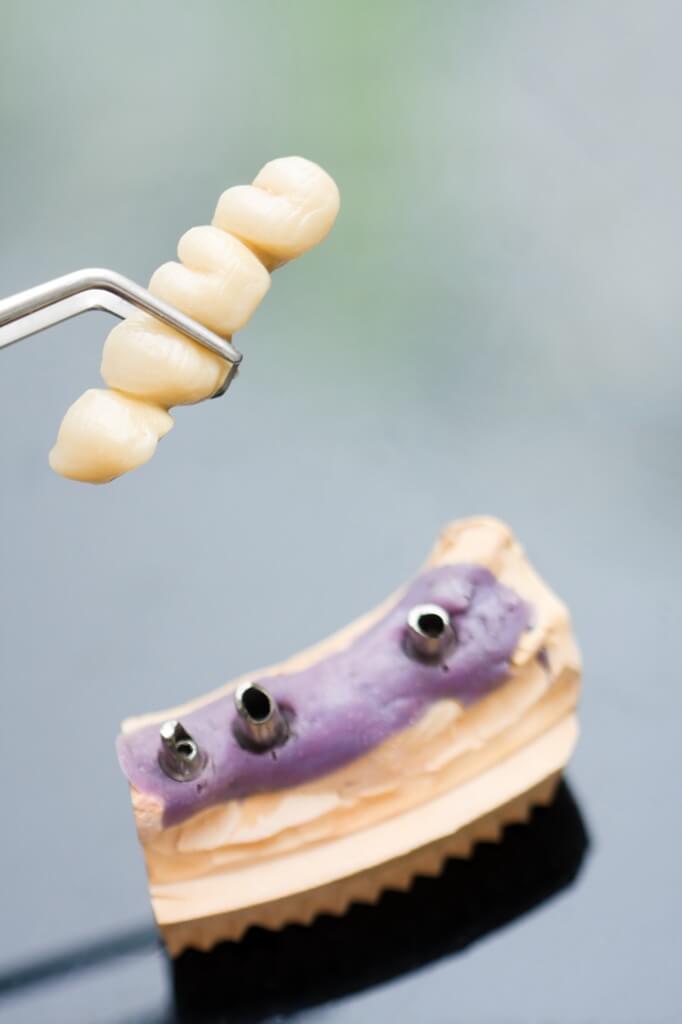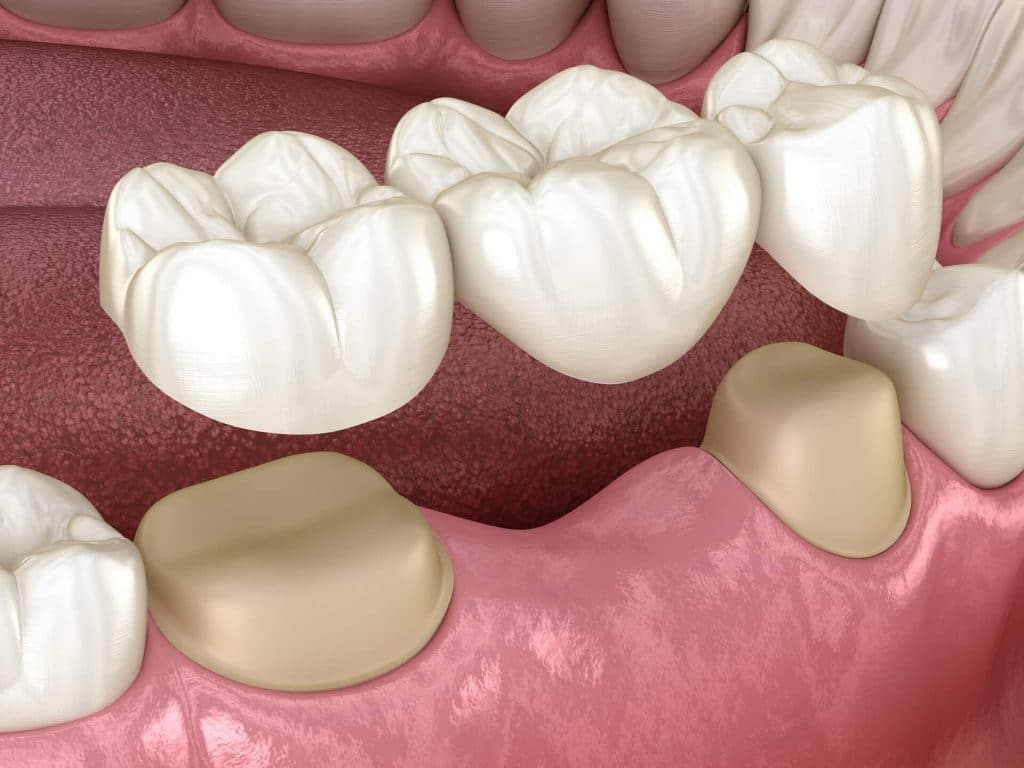Dental Bridgework Process
Getting a dental bridge typically requires three or four visits to your dentist over a few weeks.
- Traditional dental bridge
- Maryland dental bridge
- Cantilever dental bridge
- Dental implant bridge
The restorative dentistry process works like this:
You’ll have a comprehensive exam and consultation to discuss your concerns, goals, oral health status, and whether you are a suitable candidate for bridgework. Impressions or scans of your existing teeth will be taken to create models.
For fixed bridges anchored by crowns, your adjacent teeth must first be prepared by removing a portion of enamel to allow room for the crowns to fit over them.
After the teeth are prepared, your dentist will place a temporary bridge over the area to protect the exposed teeth while your permanent bridge is being made.
The specifications from your tooth impressions or scans are sent to a dental lab, where skilled technicians will construct your permanent bridge using the information from the models and your dentist’s instructions.
When your custom permanent bridge is ready, you’ll return to have the temporary bridge removed and the new one securely cemented over the prepared anchor teeth – or attached to implants if you have an implant-supported bridge.
After seating the permanent bridge, your dentist will make any adjustments to ensure it fits properly, your bite is balanced, and you have a smooth, comfortable chewing surface.
With your new permanent bridge in place, you’ll be able to enjoy the full benefits immediately.


Advantages of Dental Bridges
By replacing missing teeth, dental bridges provide a wide range of important advantages:
Missing teeth can detract from your smile and facial appearance. A bridge fills those embarrassing gaps, restoring a complete, uniform smile.
It’s more difficult to pronounce words clearly and speak naturally when missing teeth. A bridge allows for regular speech patterns.
Not only do bridges restore your ability to bite down with force, but they also help you chew more types of foods again without limitations from unsupported jaw areas.
When you lose teeth, the surrounding tissues can shift and collapse over time, causing your facial shape to look prematurely aged. Bridges prevent this by supporting the facial muscles and structure.
Gaps between teeth allow remaining teeth to drift and tilt out of their proper positions, leading to bite and jaw alignment issues. Bridges preserve correct tooth spacing.
The anchored prosthetic teeth share the forces of biting and chewing to prevent excessive pressure on any remaining natural teeth.
While dental bridges provide many functional and aesthetic benefits, you’ll need to maintain them properly through good oral hygiene, regular cleaning, and lifestyle adjustments like avoiding extremely hard or sticky foods that could dislodge them.
Dental Bridge FAQ
Most dental bridges are made from porcelain fused to a metal alloy, giving them strength while still looking like natural teeth. All porcelain or ceramic bridges are available for a more aesthetic look, especially for front teeth. Metal alloys such as gold can also be used but are not as popular today.
With proper care, a typical dental bridge can last up to 15 years. Longevity depends on maintaining good oral hygiene, avoiding grinding habits, and getting regular dental checkups. The adhesives and materials used also impact durability.
The main alternatives include:
Dental implants – these artificial tooth roots are surgically placed in the jaw to support a crown, bridge, or denture.
Partial dentures – a removable device with artificial teeth that replaces multiple missing teeth.
Bridges offer a permanent, non-removable solution to tooth loss that restores your smile and ability to chew and speak properly. They prevent remaining teeth from shifting out of position and maintain the proper shape of your face.
Bridges require altering adjacent abutment teeth by having their enamel removed to accommodate crowns. They don’t last as long as dental implants. Cleaning around bridges can be challenging, and care must be taken with sticky or hard foods.
Bridges require the same conscientious oral hygiene as natural teeth: brush twice daily, floss once daily, use an antiseptic mouthwash, get professional cleanings every six months, and avoid biting into excessively hard foods/objects.
It’s possible but not ideal since excessive grinding forces can dislodge or fracture the bridge over time. Your dentist may recommend wearing a nightguard appliance to protect the bridge and natural teeth.
There is no age limit for getting dental bridges if you are otherwise in good oral and general health. Many older adults have dental bridges to restore their smiles and maintain dental function.
It’s best to get any gum disease (periodontitis) stabilized first through scaling and good oral hygiene before getting a dental bridge. Otherwise, the disease can compromise the anchoring teeth that support the bridge.
Modern dental bridges, especially all-ceramic ones, look incredibly natural. The color, translucency, and shape allow the pontic teeth to blend seamlessly with your teeth.
Book a Dental Bridge Consultation Today
Book an appointment to discuss your options for dental bridges in Colorado Springs.


